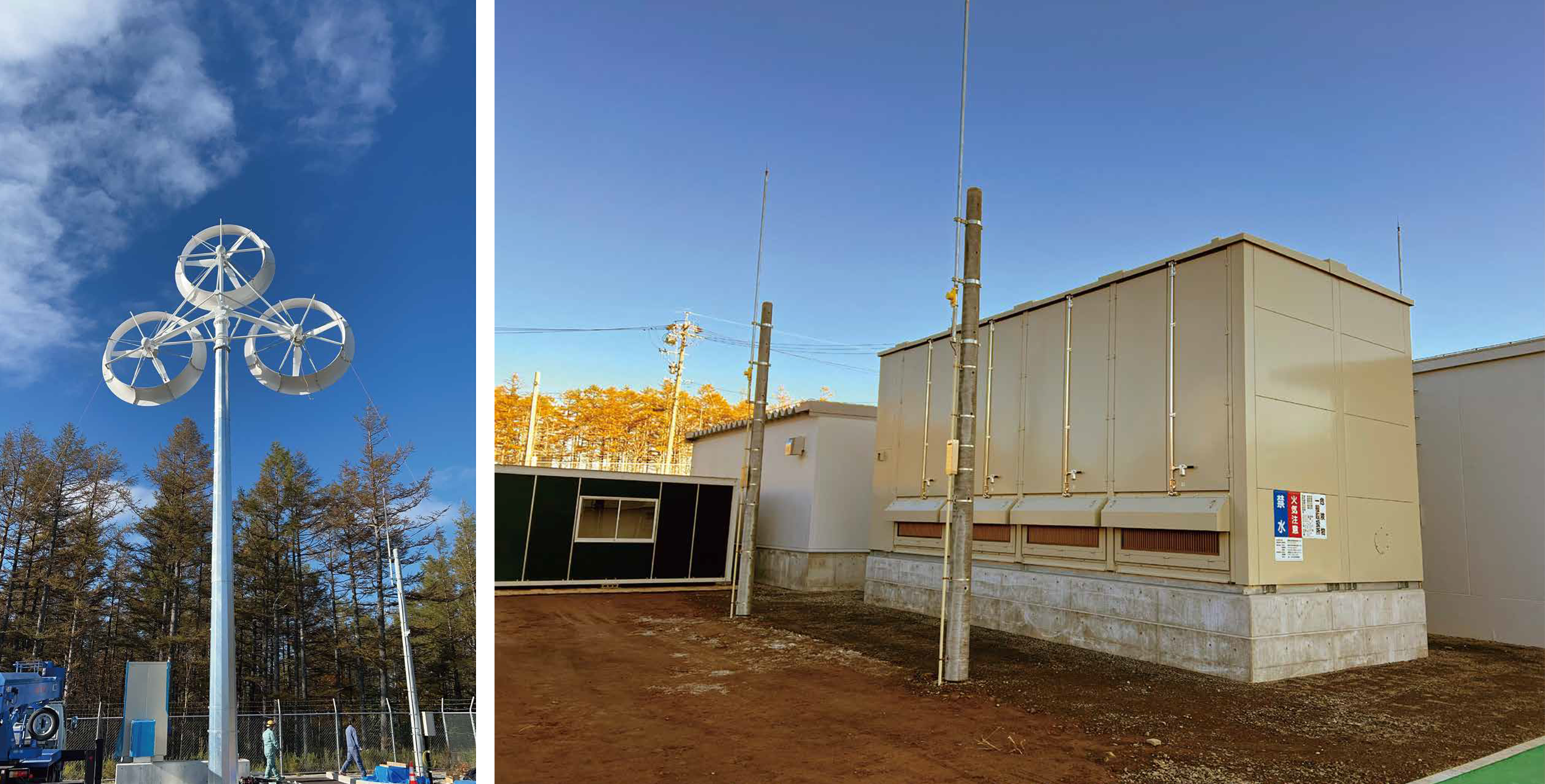Space Tracking and Communications Center
Keeping Tracking Space Probes Even during a Power Failure
Introducing Emergency Power Supply Equipment to MDSS
New emergency power supply equipment is to be introduced to the Misasa Deep Space Station ("MDSS") located in Saku City, Nagano Prefecture. Specifically, the installation will consist of wind power generation equipment and NAS batteries (which use the chemical reaction between sodium and sulfur to store electricity and can be used to provide a stable power supply on a long-term basis). OWADA Satoru, Associate Senior Researcher of the Space Tracking and Communications Center outlined the background to the introduction.
"MDSS's antenna equipment was completed in 2021 as a successor to the large parabolic antenna installed at the Usuda Deep Space Center (UDSC)," he says. "The main role of MDSS is to send commands to space probes operating in deep space (defined as two million kilometers or more away from Earth) and receive observation data back from the probes. Presently, MDSS is tracking the Asteroid Explorer "Hayabusa2" as well as probes of other countries, but it is difficult to ensure a stable electricity supply to continue observation in case of a power failure at the unmanned station."
MDSS has no on-site staff and in the event of a power failure someone would have to rush from UDSC to the station to restart the equipment. "In order to solve this problem, we will introduce the emergency power supply equipment, thereby ensuring the continued operation of the station."

The newly introduced NAS battery system can start supplying power instantly in the event of a power failure, making it a suitable choice for the unmanned station. MDSS is located in an area that gets snowdrifts of around 1.2 meters in winter, so solar power generation is not an option. The semi-mountainous area does get strong winds, however, which can be harnessed to produce wind power.
"A NAS battery system had already been installed at the Tanegashima Space Center, and so we interviewed staff at the Center about the system design and precautions to be taken when installing and operating the system for its introduction at MDSS," says OWADA
According to him, the NAS batteries had to be assembled on-site on a non-rainy day as the sodium used in the batteries is a hazardous substance that should not be exposed to water. "I hope that the installation of the batteries will help JAXA promote the use of clean energy across its bases," says the researcher.
"Through the introduction of the equipment at MDSS, in addition to ensuring the Station can continue operations even in the event of a power failure, I would also like to contribute to the achievement of the SDGs by promoting peak shaving."
Profile

|
|
|---|
All the images are copyrighted ©JAXA unless otherwise noticed.
- Home>
- Global Activity>
- Public Relations>
- JAXA’s>
- JAXA's No.90>
- Introducing Emergency Power Supply Equipment to MDSS